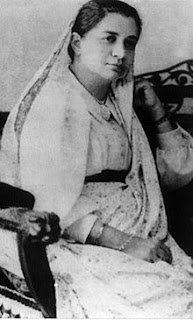Veerapandiya Kattabomman Karuthayya Nayakudu
Also
known as Kattabomman was an 18th-century Palayakarrar ('Polygar')
chieftain from Panchalankurichi of Tamil Nadu. He was born on 3rd January 1761 for Jagaveera Kattabomman and Arumugathammal. His ancestors migrated to
Tamil Nadu from areas in present day Andhra Pradesh during the
Vijayanagara period. Also known as Kattabomman Naykar he was among the
earliest to oppose British rule in these regions. He waged a war with
the British six decades before the Indian War of Independence occurred
in 1857 in the Northern parts of India.
Kattabomman
family resisted the East India Company rule starting from 1755, which
marks the first expedition of company as documented. The expeditions
against this particular family of polygar are registered later in 1760,
1791 and 1799. Out of the four expeditions, the last two were recorded
to be the most resistive to the company rule. Both the cases of 1791 and
1799 ended with hangings of the Nayakars.
Veerapandiya
Kattabomman is found to be the last of the Kattabomman Nayakar who
waged war against the East Indian Company rule since their villages were
forcibly taken into control for tax collection. His resistance
continued for 8 long years starting from 1791 until his martyrdom in
1799. Subrahmanya Pillai - chief manager of Kattabomman’s operations and Soundara Pandya Nayaka -
close aid from Nagalapuram polygar family, were captured by the aid of
their own greedy Ettayapuram polygar family led by Ettapan and were executed along with Veerapandiya. Subrahmanya
Pillai was hanged at Nagalapuram and his head was sent to
Panchalakuruchi on a spike for display. Soundara Pandya Nayaka was
hanged at Gopolapurm.
Veerapandiya was hanged at Kaittur (kaythur) to downturn the activeness of polygars who offered maximum resistance to the company raj then. Several resisters who belonged to the family of Polygars were captured and sent to Palamkotta jail as prisoners.
Later on Veerapandiya’s younger brother Umai Durai, who escaped from the captivity, collectively waged war against the British with the support of other polygar family leaders. Even though he was deaf and dumb, he effectively led the rebellion for three long years from 1799 till his martyrdom in 1801. His bravery was applauded by the British themselves.
To honour the great personality and to commemorate the bicentenary of Kattabomman Nayakar’s martyrdom, govt. of India bought out a postal stamp in 1999. Also, India's premier communication nerve centre of the Indian Navy at Vijayanarayanam is named as INS Kattabomman. Even though there is not much written about these great people in literatures, Veerapandiya and other Kattabomman Nayakar’s are still alive in the minds of rural population. People revere them for their extreme sacrifice and bravery which stood guard for their freedom for more than six decades.
Reference:
1. http://en.wikipedia.org/wiki/Veerapandiya_Kattabomman
2. Page 172. A Polictical and General History of the district of Tinnevelly in the Precidency of… by Robert Cladwell.
3. Bandits and Kings : Moral Authority and Resistence in Early collonial India







